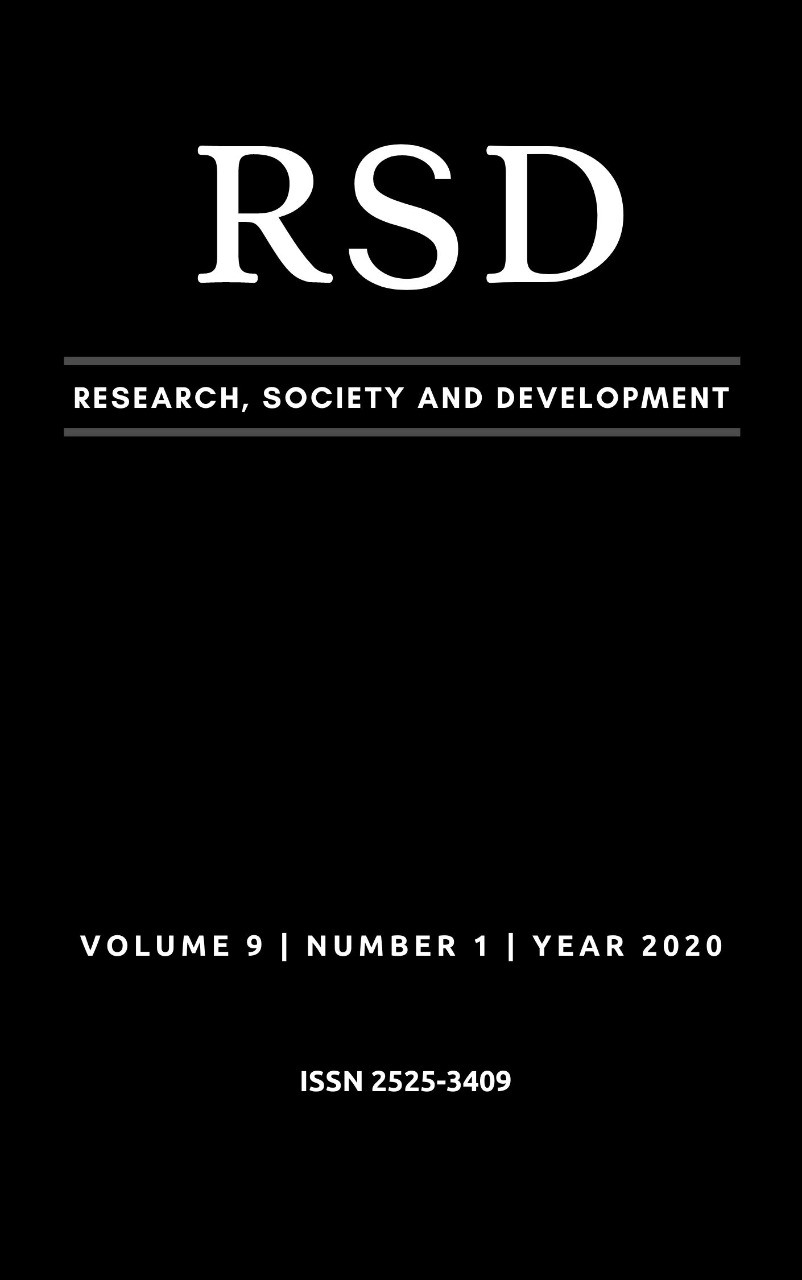Mortalidade de vítimas de traumatismo cranioencefálico internados em unidade de terapia intensiva
DOI:
https://doi.org/10.33448/rsd-v9i1.1658Palavras-chave:
Trauma, Acidentes de Trânsito, Urgências e Emergências.Resumo
Objetivo: Estabelecer as características epidemiológicas, e fatores preditivos de letalidade das vítimas de TCE grave, internadas na UTI de um Hospital Referência no atendimento ao Trauma no Estado do Piauí, durante o período de janeiro de 2014 e dezembro de 2014. Metodologia: Trata-se de um estudo descritivo e retrospectivo. Os dados serão coletados através dos prontuários e anotados em um formulário padronizado. Resultados: Os dados analisados demonstraram de adultos jovens do gênero masculino, cerca de 88,5%. Houve maior prevalência de TCE grave (18,4%), em virtude do cenário da pesquisa: o ambiente de terapia intensiva. Observou-se que os acidentes motociclísticos foram a principal causa de TCE (75,9%). Quanto aos achados tomográficos na admissão da UTI houve predomínio de Hematoma Extradural (HED), seguidos por Hematoma Subdural Agudo (HSDA). Conclusão: A pesquisa realizada demonstou que os fatores preditivos de letalidade nessa população foram o tempo de ventilação mecânica e a realização de hemotransfusão.
Referências
Bruns Junior, J., & Hauser, A. (2003). Epidemiology of Traumatic Brain Injury: A Review. Epilepsia, 44(10), 2-10.
Faria, J.W.V., Nishioka, S.A., Arbex, G.L., Alarcão, G.G., & Freitas, W.B. de. (2008). Occurrence of severe and moderate traumatic brain injury in patients attended in a Brazilian Teaching Hospital: epidemiology and dosage of alcoholemy. Arquivos de Neuro-Psiquiatria, 66(1), 69-73.
Fernandes, R.N.R. (2010). Análise epidemiológica das hospitalizações no Sistema Único de Saúde por traumatismo crânio encefálico (Dissertação Mestrado). Instituto de Saúde Coletiva, Universidade Federal da Bahia, Salvador.
Haddah, S.H., & ARABI, Y.M. (2012). Critical care management of severe traumatic brain injury in adults Scandinavian. Scand J Trauma Resusc Emerg Med., 20, 12.
Lebrão, M.S.K. (2000). Morbimortalidade por traumatismo crânio-encefálico no município de São Paulo. Arq Neuropsiquiatr, 58(1), 81-89.
Melo, J.R.T., Silva, M.R.A, & Moreira Júnior, E.D. (2004). Características dos pacientes com trauma cranioencefálico na cidade do Salvador, Bahia, Brasil. Arq Neuropsiquiatr. 62(3), 711-715.
Moura, J.C. (2011). Perfil clínico-epidemiológico de traumatismo cranioencefálico do Hospital de Urgências e Traumas no município de Petrolina, estado de Pernambuco. Arq Bras Neurocir, 30(3), 99-104.
Piras, C., Forte L.V., Peluso, C.M., Lima, E.M., & Prandini, M.N. (2004). Estudo Epidemiológico do TCE em Unidade de Terapia Intensiva Geral como Resultado da Adesão ao Latin American Brain Injury Consortium. Rev Bras Terap Intens, 16, 164-69.
Quevedo, M.J. (2009). Internações em UTI por trauma cranioencefálico (TCE) na cidade de Porto Alegre (Dissertação de Mestrado). Escola de enfermagem, Universidade Federal do Rio Grande do Sul. Porto Alegre.
Ruy, E.L., & Rosa, M.I. (2011). Perfil epidemiológico de pacientes com traumatismo crânio encefálico. Arquivos Catarinenses de Medicina, 40(3), 17-20.
Downloads
Publicado
Edição
Seção
Licença
Autores que publicam nesta revista concordam com os seguintes termos:
1) Autores mantém os direitos autorais e concedem à revista o direito de primeira publicação, com o trabalho simultaneamente licenciado sob a Licença Creative Commons Attribution que permite o compartilhamento do trabalho com reconhecimento da autoria e publicação inicial nesta revista.
2) Autores têm autorização para assumir contratos adicionais separadamente, para distribuição não-exclusiva da versão do trabalho publicada nesta revista (ex.: publicar em repositório institucional ou como capítulo de livro), com reconhecimento de autoria e publicação inicial nesta revista.
3) Autores têm permissão e são estimulados a publicar e distribuir seu trabalho online (ex.: em repositórios institucionais ou na sua página pessoal) a qualquer ponto antes ou durante o processo editorial, já que isso pode gerar alterações produtivas, bem como aumentar o impacto e a citação do trabalho publicado.


